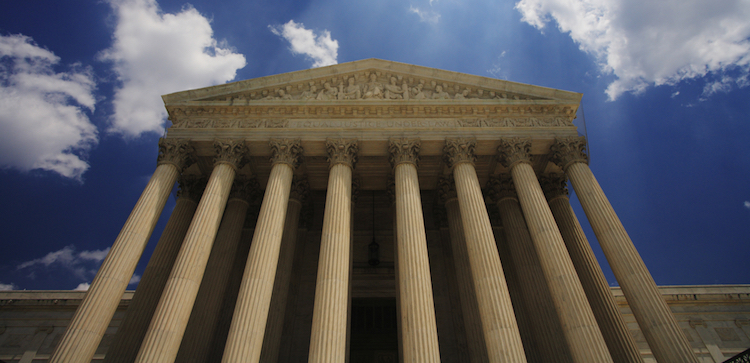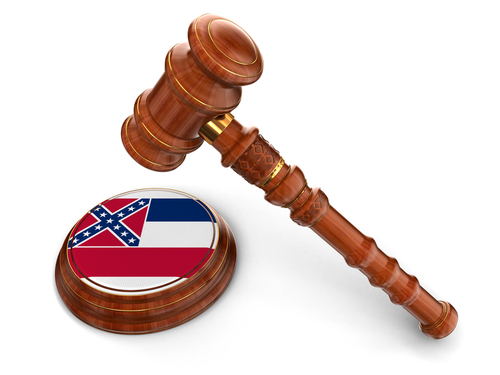Second half of SCOTUS term may bring the temperature down compared to its feverish first

Image from Shutterstock.com.
The U.S. Supreme Court was thrust to the forefront of public attention this fall, from arguments in major cases on religious rights, the Affordable Care Act and the U.S. census, to repeated emergency applications involving state COVID-19 restrictions and the presidential election.
But the justices may soon be able to settle in for some relative peace and quiet in the second half of their term. Decisions in those high-profile merits cases are being drafted and circulated. COVID-19 legal cases may ebb if the promising vaccines improve conditions. And, barring the unexpected, the court seems done with the election.
That leaves an upcoming merits docket, mostly featuring complex business cases, issues of legal procedure and leftover challenges to policies of President Donald Trump’s administration. Some in the last category may fizzle once President-elect Joe Biden takes office.
“The court is overdue for a lower-profile term, and this may be that term,” says Kannon K. Shanmugam, the chair of the Supreme Court and appellate practice group at Paul, Weiss, Rifkind, Wharton & Garrison, who has already argued two cases this term and has cert grants in three more.
Managing the docket
There are no guarantees the court won’t add some big cases for decision this term. Earlier this month, the justices accepted an important case regarding the compensation of student-athletes. It granted review of cert petitions from the National Collegiate Athletic Association and several college sports conferences in a case in which lower courts said restrictions on certain education-related aid violated antitrust laws.
The high court typically keeps adding cases to the docket of its current term through mid-January (with the last argument session held in April), so there is still a chance the court could grant review in some hot-button issues, including pending cases about abortion restrictions and free speech.
“The court does manage its docket and the degree to which [the court] is in conflict with the other branches or with public sentiment,” says Aziz Z. Huq, a professor at the University of Chicago Law School and a former law clerk to the late Justice Ruth Bader Ginsburg. “In the short term, the tools they have to do that involve how they decide cases, not which cases they pick up.”
Huq does not necessarily accept the theory that the court will have a lower profile in the new year. For one thing, he says, the court’s shadow docket of emergency matters, especially those involving the COVID-19 pandemic, is likely to remain busy in the near future.
But he acknowledges that the justices have internal procedures available to them to delay deciding whether to hear a particular big case, effectively pushing that case into the next term.
When it comes to Trump administration polices, the court just issued a ruling in Trump v. New York, about the president’s plan to exclude undocumented immigrants from the final census tally to be used for apportioning seats in the U.S. House of Representatives among the states. The administration had pressed the court for expedited consideration of that case, citing deadlines at the end of December and in early January for executive branch officials and the president to submit the final numbers.
But oral arguments in that case revealed uncertainty about whether the Census Bureau could, by those deadlines, finish its work of trying to identify undocumented immigrants who responded to the census but whom wouldn’t be counted for apportionment. In an unsigned opinion on Dec. 18, and over the dissent of three justices, the court held that the case was “riddled with contingencies and speculation” and made it premature to rule on the merits.
There are two other cases on Trump administration policies that have been granted review but not yet scheduled for argument. One is Wolf v. Innovation Law Lab, stemming from a challenge to a policy called Migrant Protection Protocols for certain undocumented immigrants, typically from Central America, who reach the United States through Mexico and are returned to Mexico while their U.S. removal proceedings continue.
The other is Trump v. Sierra Club, involving a challenge to the administration’s transfer of Department of Defense funds to finance construction of the border wall with Mexico.
“I don’t think we’re going to see something big from the court on those cases,” Huq says.
Shanmugam says these cases could peter out because of the change in presidential administrations.
“Some of the more political cases could disappear from the court’s docket depending on what the incoming solicitor general decides,” he says.
Patents, media and voting rights
The five cases that Shanmugam is directly involved in reflect that much of the rest of the court’s merits docket this term is dominated, for now, by business cases.
One of the bigger ones is BP P.L.C. v. Mayor and City Council of Baltimore, in which Shanmugam’s client, BP (once known as British Petroleum) and 20 other energy companies are fighting to remove from state courts back to federal court a high-stakes lawsuit brought by the city alleging climate-change harms by the defendant companies.
That case will be argued Jan. 19, the day before Inauguration Day, when the court has scheduled no arguments since it is expected to participate in the proceedings.
Because of Inauguration Day and the federal Martin Luther King Jr. Day holiday, the court has scheduled only five hours of arguments during its January sitting. (Ten to 12 hours is the recent norm during each two-week sitting.)
Another relatively big case on the January list is Federal Communications Commission v. Prometheus Radio Project, involving a challenge to the FCC’s changes to media cross-ownership rules.
Another set of cases granted review but not yet given an argument date is important to the patent community. In United States v. Arthrex Inc. and several companion cases, the court will decide whether administrative patent judges of the U.S. Patent and Trademark Office are “principal officers” who must be appointed by the president and confirmed by the Senate, or “inferior officers” whose appointment Congress may vest in a department head.
The case could upend many patent decisions, as the U.S. Court of Appeals for the Federal Circuit, the federal appeals court in Washington that handles intellectual property cases and a few other specialized matters, held that the administrative patent judges must be appointed by the president.
The Supreme Court will also weigh the remedy that the federal circuit imposed, that federal statutes placing restrictions on when officials can be removed from office cannot be applied to the patent judges. (The case is part of another big term for federal administrative law nerds, as the court already heard arguments in a case challenging the powers of a federal agency that oversees mortgage giants Fannie Mae and Freddie Mac.)
Another notable case that has been granted but not yet set for argument will require the justices to consider a challenge to a state’s voting policies, but outside the heat of a pending presidential election.
In Brnovich v. Democratic National Committee, the justices will hear Arizona’s appeal of a challenge under Section 2 of the Voting Rights Act of 1965 to two of the state’s ballot policies. One does not count provisional ballots cast in person on Election Day outside of a voter’s designated precinct, and the other permits only certain people—such as family and household members, caregivers, mail carriers, and elections officials—to handle a voter’s completed early ballot.
An en banc panel of the U.S. Court of Appeals for the 9th Circuit ruled that both provisions had racially discriminatory results and the ballot-collection provision was enacted with discriminatory intent.
Huq says the case could be an important test of how the newly more conservative Supreme Court, with the addition of Justice Amy Coney Barrett, views the Voting Rights Act.
The court has yet to schedule its February, March, and April sittings, but it is expected to try to release all opinions in argued cases by late June. (Last term ended well into July largely because of the disruption caused by the pandemic.)
Nicole A. Saharsky, the co-head of the Supreme Court and appellate practice at Mayer Brown, says the past year has been challenging for the high court, with the pandemic upsetting usual routines, the death of Justice Ginsburg, and election cases and other matters on the busy shadow docket.
“I think there is some interest in lowering the temperature,” says Saharsky, who served in the U.S. solicitor general’s office for 10 years and has argued 30 cases before the court. She notes that one of her bosses there, Donald B. Verrilli Jr., who was solicitor general for five years under President Barack Obama, would say to his staff, “Maybe this will be the quiet year.”
“But then it was never the quiet year,” says Saharsky. “But I do hope the temperature goes down.”



